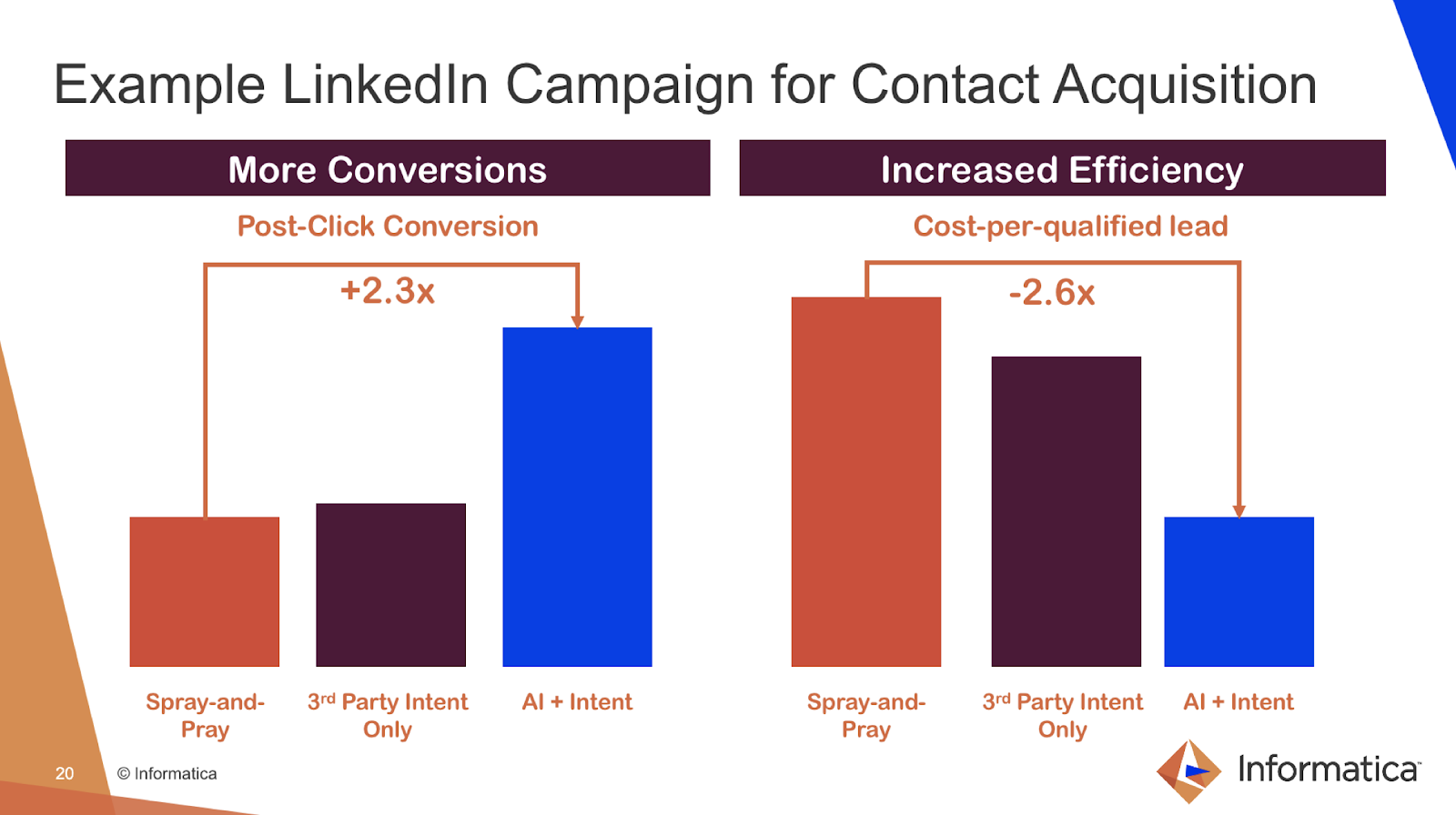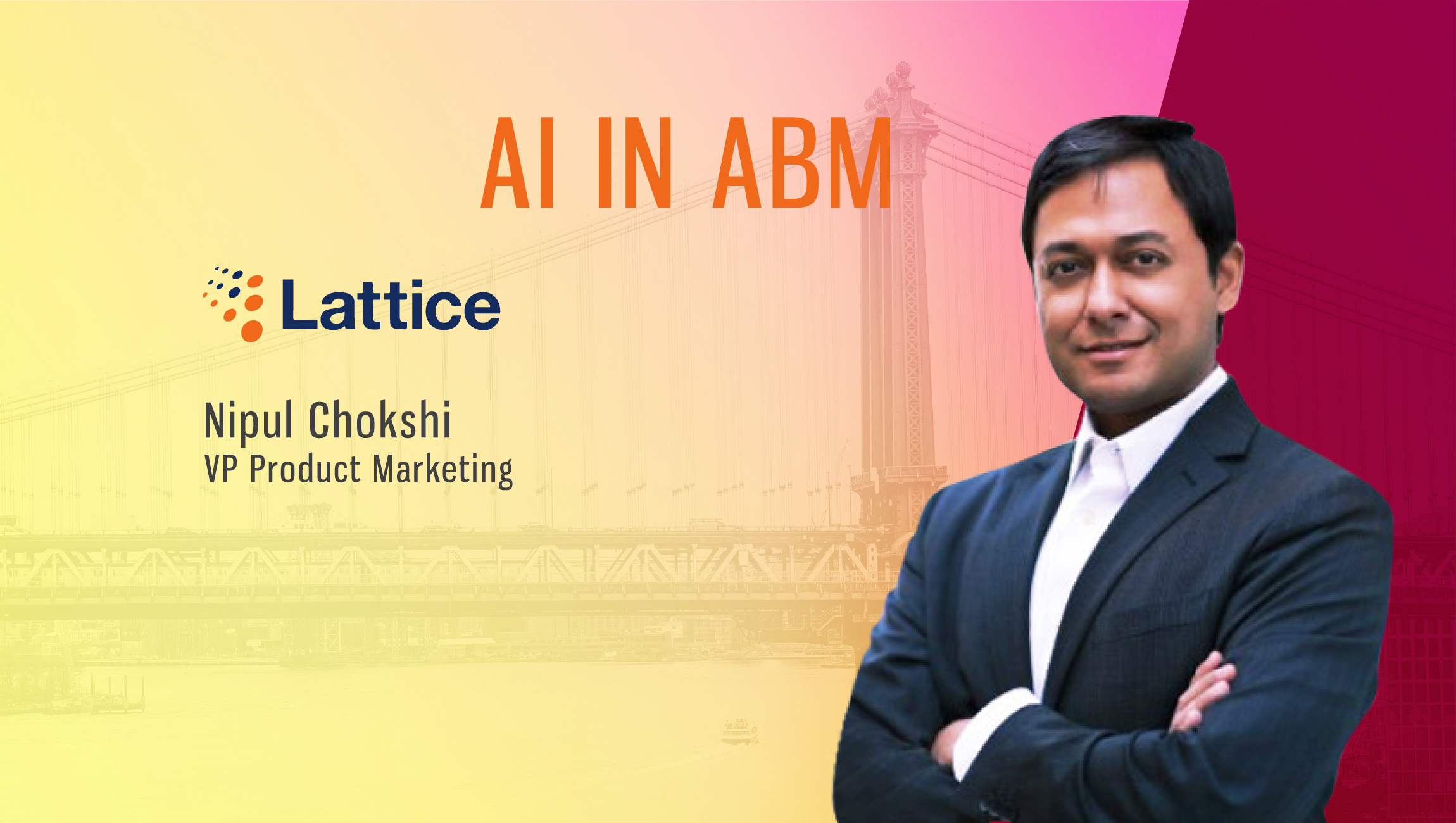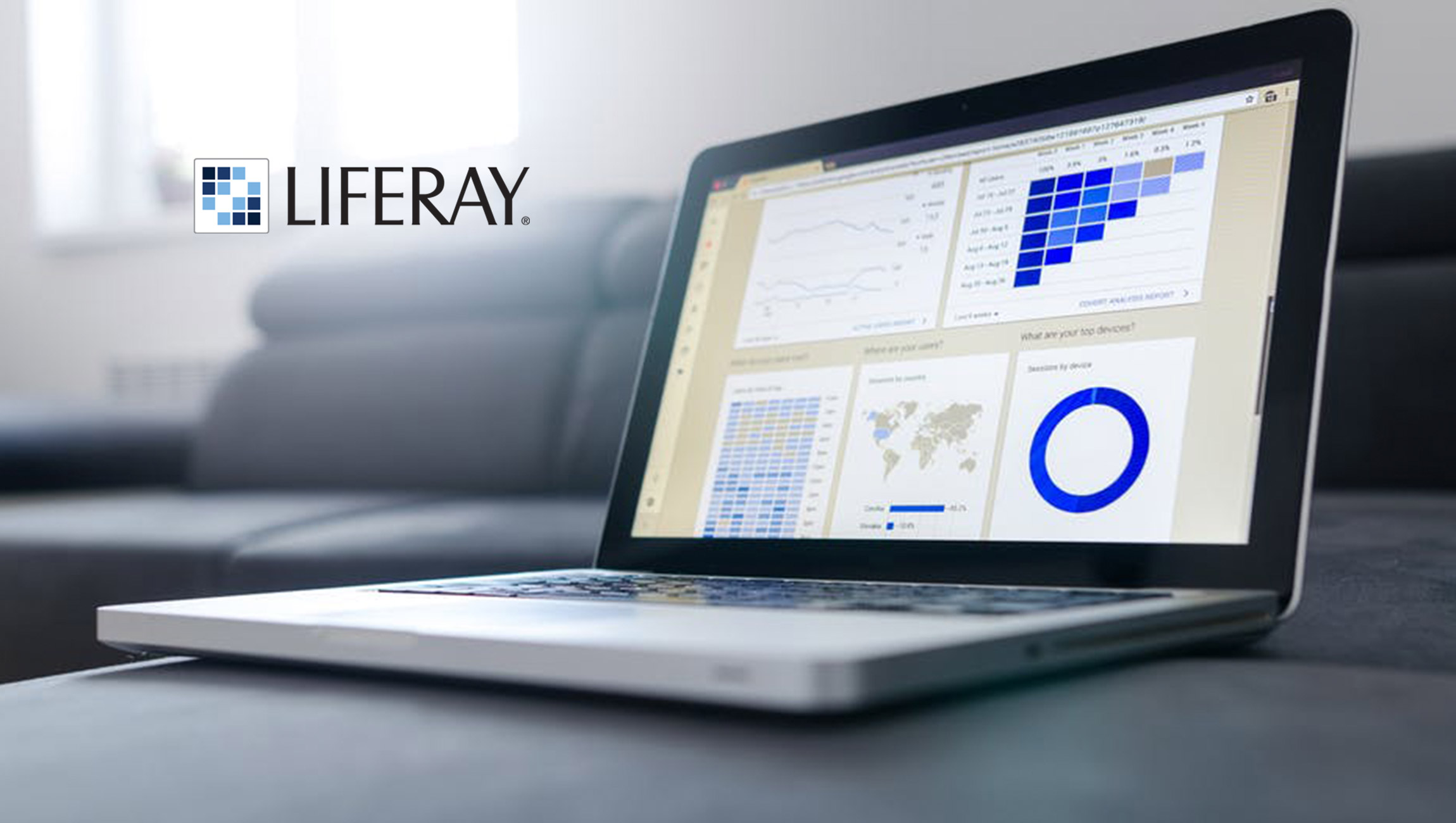Nipul Chokshi
VP, Marketing, Lattice Engines
A Martech RADAR 2018 company and a global leader in Marketing Analytics for B2B marketing, Lattice Engines, positions itself uniquely in the ever-growing ABM spectrum. The ABM with predictive intelligence provider has carved itself a niche by enabling B2B marketers to create predictive-based winning ABM campaigns and generate revenue that directly impacts marketing and sales programs. Nipul Chokshi, VP Marketing, Lattice Engines, untangled the various facets of the company’s differentiation in ABM and the core tenets of the Lattice Atlas Platform.
Html code here! Replace this with any non empty text and that's it.
Tell us about your role at Lattice Engines and the team/technology you handle.
I run our marketing efforts here at Lattice. My role is to work closely with the sales, product and success teams to execute on our go-to-market strategy and to help drive pipeline with insightful content and compelling campaigns.
How do you define ‘Technographic Data’ at Lattice?
We see Technographic Data as a key signal for identifying specific prospect and customer targets for campaigns based on the tech they’ve purchased and/or are using. It can serve as a profiling mechanism for segmentation and targeting (e.g. I want to target companies who are big users of virtualization services) as well as for determining whether it’s the right time to target them (e.g. Companies that have just purchased virtualization services in the past 3 months are perfect targets for my campaign).
Technographic data is just one part of the 360-degree view that you need to really understand your buyers and engage them with relevance. Most of our customers will use tech data in conjunction with the following:
- Firmographic data (e.g. number of employees, HQ location, employees per location etc.),
- 3rd party intent data (e.g. what pages/topics are companies researching on non-branded sites),
- 1st party intent data (e.g. what pages are known/anonymous users visiting on branded sites)
- Social and online presence data (e.g. activities happening associated with my brand on Twitter/Facebook, web traffic, etc.)
- Financial data (e.g. funding received, credit details, etc.)
- Product usage and transaction data
What are the core tenets of the Lattice Atlas Platform? What are the distinct features of the technology/engineering?
There are three core pieces:
- Connect all available 1st and 3rd party data to create a 360-degree view of customers and prospects
- Segment audiences using AI and data to identify the most attractive targets and next best actions
- Activate audiences across all channels to drive hyper-personalized omnichannel campaigns and programs
Our technology differentiation lies in several places:
- AI-based matching – we have a patent-pending technology that we use to match customer data from disparate internal systems (CRM, Marketing Automation, Web Analytics, etc.) to the third party data we have in our Lattice Data Cloud. This results in better match rates ultimately making the data more usable for targeting and segmentation for sales and marketing purposes.
- Self-service AI modeling – we have enabled Marketing and Sales Ops personas with the ability to create their own AI models – without having to know anything about data science
- AI-based orchestration and execution – a key part of our value proposition is that we allow marketing and sales to take action on the recommendations from our platform. For instance, in our CRM-integrated sales app, reps can see not only the account scores as well as the data associated with the accounts but are also presented with widgets that allow them to take action like create a new opportunity, take notes, etc.
What are the key differences, between ABM technology companies offering intelligence, based on?
Our POV is that you can only be successful with ABM at scale if you solve what we call “the insights and data problem.” Let me explain.
The good news is that we are capturing more data than ever about our prospects and customers in a range of applications – CRM, marketing automation, web visitor logs, third-party intent, DMP, ERP, support systems, etc.
The bad news is that all this data is fragmented and disconnected. Ops teams and IT spend weeks on end cobbling together the data needed for audience creation, activation and measurement. Most of this work is done in spreadsheets or data-lakes. Spreadsheets are error-prone, hard to maintain, and don’t scale. Data-lakes require IT involvement across the campaign lifecycle which impacts agility.
Our point of view is that you need to do the following in order to do ABM at scale, you first need a unified view of your customers and prospects – drawing upon all your 1st party data (CRM, Marketing Automation, web analytics, transactions, etc.) and 3rd party data (firmographics, technographics, intent data, etc.).
You need a way for marketers to easily access this data and use it to segment and create audiences for their campaigns. AI plays a crucial role here. You want to leverage AI to recommend which targets are most likely to convert, what they’re likely to buy and how much.
Finally, you want to make these audiences available across all your channels so that you can engage the buying committees in your target accounts in a coordinated and consistent way.
Does the Lattice Atlas Platform provide all these services?
There are three key components of the Lattice Atlas platform that enable the above.
- Data Ingestion Engine: We’ve built out a robust capability to ingest large volumes of customer and 3rd party data and then aggregate and standardize that data using our patent-pending AI-matching algorithm.
- AI Audience Builder: The data is made available to marketers via a Saas app. Marketers can explore their buyer data and insights and create audiences using a simple drag and drop UI. A key part of the Audience Builder is an AI modeling and predictions engine that enables marketers to create their own AI models for predicting who’s most likely to convert.
- Activation Apps: We’ve built out connectors into 3rd party apps like Salesforce, Marketo, Eloqua, etc. that enable customers to publish those audiences in those tools – so that you can run campaigns targeting them.
Do you think these AI/ML and Prediction Analytics as independent technologies have created ambiguity for ABM exponents and CMOs during adoption?
I believe that the emergence of AI and Predictive Analytics is going to be met with confusion at first, but with the understanding of the impact AI has on account-based marketing will make exponents and CMOs big fans of the technology. Artificial Intelligence is the natural next step to successful B2B marketing. There is a breadth of data out there and AI makes it possible to analyze that data to provide quality insight and create hyper-targeted, omnichannel campaigns, which is the key to ABM.
How is CDP for ABM different from those used by ad-tech platforms? How do you differ from the audience data platforms?
A CDP for ABM is different from those used by ad-tech in several ways:
- Data: CDP for ad-tech typically is called a “DMP” and contains user cookie data for targeting purposes. You need so much more for ABM: account firmographics, technographics, intent, fully mapped account and contact hierarchies so that you can identify buying committees, etc.
- AI-based Audience creation: Most CDP for ad-tech are black boxes when it comes to AI modeling and predicting behavior. In ABM, you need the ability to create different models for different products, business units, prospects and customer segments, etc. because each is sold (or sold to) differently.
- Omnichannel Activation: CDP for ad-tech primarily focus on executing display ads. Successful ABM requires publishing audiences to all your channels and activating them in a coordinated way across those channels.
How does your intelligence technology complement existing customer experience platforms? Could you share a key example from your integrations with CX platforms?
Customer experience platforms can take advantage of the data, insights and audiences published by Lattice. Take CRM for example. Sales and Customer Success folks can use our pre-built Salesforce app (for example) shows AI-based recommendations that identify which customers are most likely to buy, who’s most likely to churn and so on. They can then use the data and talking points in that app to start a dialogue and follow-up on these AI recommendations.
What are your predictions for AI-driven marketing optimization and CRM orchestration tools in 2018?
We think that customers are starting (and will continue) to see value from adding AI to their ABM strategies – they’re able to optimize their marketing and orchestrate omnichannel engagement with their targets at scale.
Informatica, for example, uses AI audiences and data to create personalized buyer journeys for their mid-market segment (any company under $1B). As a result of using our AI and data, they’re able to make their campaigns more effective and more efficient.
The results below are from an example LinkedIn campaign they ran – they used Lattice AI to identify audiences for their LinkedIn campaigns. As you can see, they saw a 2.3x increase in post-click conversions (compared to just standard “spray and pray targeting”) while reducing cost-per-qualified lead by a factor of 2.6x.

Thanks for chatting with us, Nipul.
Stay tuned for more insights on marketing technologies. To participate in our Tech Bytes program, email us at news@martechseries-67ee47.ingress-bonde.easywp.com



